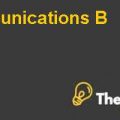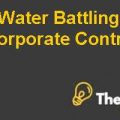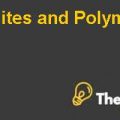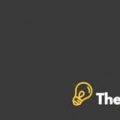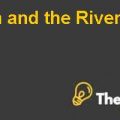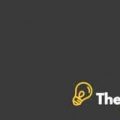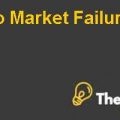Cumberland Worldwide Corporation Case Study Solution
Describe the financial problems facing the management of CW. What is the source of the problems (e.g. bad luck?)
Cumberland Worldwide Corporation is considering for the reorganization of its financial or capital structure as the current structure of the company does not provide enhanced benefits. The company intends to offer new debentures amounting around $175 million but there is a risk for the company.
The risk for additional financing creates the problem for the management to run the business effectively. The interest cover ratio of the company will significantly reduce. Another problem associated with the issuance of debt is that the under subscribed of debt that means the investors are concerned over the financial performance of the company.
The bonds investors know that the company currently has heavy proportion of debt finance and additional debt finance will increase the financial risk of the company which in turn increases the business risk. Another major problem is facing by the Cumberland management is that the creditors are unhappy with the company due to delays in payment and inefficient working capital managements.
It is difficult to negotiate with the creditor to reorganize the debt structure. The aggressive strategy of acquiring small companies through debt finance reduces the performance of the company and in addition to this the management of the company is unable to control operational cost which leads to inefficiencies.
Are the financial markets accurately assessing the value of the company’s assets? Can money be made by investing in the firm’s securities? Specifically, does the market value of the right-hand side of the holding company’s balance sheet fully reflect the liquidation value of its assets? If not, why not?
The value determined by the financial markets for the company is based on multiple factors and it does not reflect the valuation of company’s assets. The major factor on which the market value consist is prospects of the company, analysts of the financial markets creates the projection of the company’s revenue and profitability; it could be based on historic data and best estimate. Another most important factor for the value of company’s stock is confidence of the investor in the stock.
The confidence of the investor is assessed by the price-earnings ratio of the stock that means higher P/E ratio indicates the higher confidence of the investor. The market values are based on stock information and associated news which might increase the stock value above the value of assets of the company.
The investors can make money through investing in those stock which is trending to decline. The strategy of sell no buy later will be helpful as the today's selling price is higher than future buying price. Therefore, the investor can get a reasonable benefit. At the time of liquidation, the assets will be sold at the lower price than its existing value; this is due to the selling expense for the company.
To sell the large assets base, the company has to correspond with brokers and agent as they will help in selling. The buyer negotiation power is very high at the time of liquidation. Therefore the market value does not reflect the value of assets of holding company. In the case when the liabilities of the company is higher than assets, then the option or stock of the investor is out of money although there is no intrinsic value, it could be possible there is time value which will be reduced by the pass of time.
CW management seems to believe that the best way to create value for CW’s claimants is to invest significant amounts in the rejuvenation of Cross River. What are the cost implications for the claimants if the rejuvenation plan is successfully implemented? What risks are involved in the plan to rejuvenate Cross River? At the time of the case, the yield on long-term Treasury securities was 8%; as an independent company, Cross River’s long-term borrowing rate would have been 10% and its equity beta would have been 1.1.
Cross River require around $60 million for the investment in working capital and also $30 million in the new product launch. Both amounts seem to be significant for the Cumberland, and the company will face challenges to raise these amount as the debt. However, the benefits from this investment will increase the returns for the Cumberland, but the financial risk will be risk consequently.
The management of the company is looking for additional secured debt banks which creates risk for the holding parent company. In case the company unable to repay the principal of the debt the collateral asset will be sold by the lender which removes the potential future revenue.
The capital investment in cross river subsidiary will enable the company to produces the differentiated product which has better demand in the market, and this will result in value creation for the holding company. The holding company is trying to raise debt finance on the assets of the subsidiary.
The current borrowing rate of 10% indicates that the company has the less financial risk as compared to Treasury rate of around 8%. The equity beta of the cross river is 1.1 which indicates that the company is facing less business risk and has the potential to increase its debt capacity which in turn increases their beta equity. The interest cost of the company will increase due to the additional debt finance which in turn reduces the dividend income for the holding company.
Would you support management’s plan for Cross River as a bank lender? As Sam Adams? As a preferred stockholder? As a common stockholder?
The management intends to invest Cross River Company as the company has the potential to generate reasonable cash flows. After the acquisition, the company does not have substantial improvement in its products which reduces the confidence of the customers over the company.
The major factor behind the low performance of the Cross River is the lack of differentiated product which is required in the market. The capital investment in working capital will help the company to reduce its operational inefficiencies and increases profit margins.
Cumberland Worldwide Corporation Harvard Case Solution & Analysis
Bank Lender:
Although the investment in the newer asset will generate the good return the bank lender is concerned over the buyback capacity of the borrower. The Secured loan lender is facing less default risk as compared to the unsecured lenders. The lender intends that company will generate sufficient cash flows to pay the annual interest expenses, at the same time the prospects of Cross River indicates that it will have enough cash flows to pay the annual interest.
Sam Adams:................
This is just a sample partial case solution. Please place the order on the website to order your own originally done case solution.

